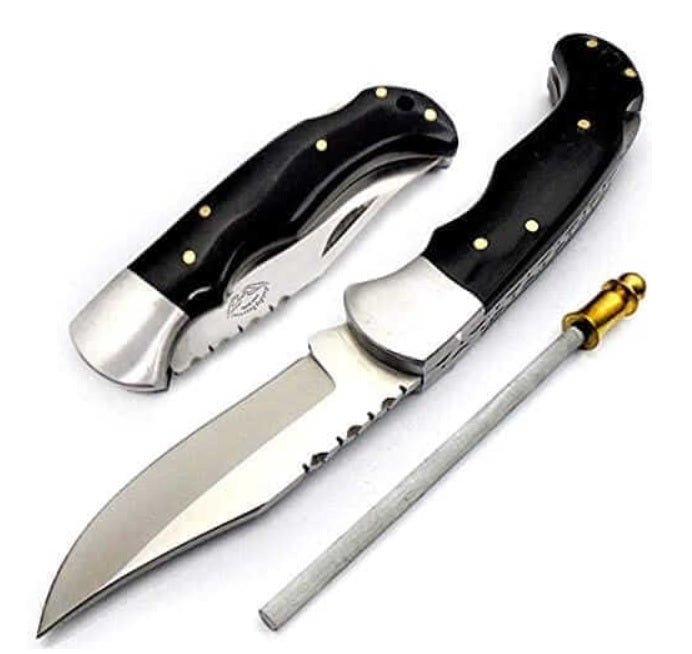
The Ultimate Guide to Folding Pocket Knives: How to Choose, Use, and Maintain Your Knife
Posted by Best.Buy. Damascus1 on
Pocket knives are versatile tools that can come in handy in a variety of situations, from opening packages to preparing food to self-defense. If you're in the market for shopping a new pocket knife, or if you already own one and want to learn more about how to use and maintain it, this guide is for you. In this article, you will get everything you need to know about a folding pocket knife, from how to choose the right knife to how to care for it.
Choosing a Folding Pocket Knife
When it comes to choosing a folding pocket knife, there are several factors to consider, including blade shape, blade length, handle material, and locking mechanism. Here are some tips to help you make the right choice:
Blade shape: Different blade shapes are designed for different tasks. For example, a drop-point blade is good for general-purpose use, while a tanto blade is better for piercing and slicing.
Blade length: Consider the laws in your area regarding blade length. In many places, knives with blades over a certain length are illegal to carry.
Handle material: The handle material should be comfortable to hold and provide a good grip. Common materials include wood, plastic, and metal.
Locking mechanism: A good locking mechanism will keep the blade securely in place when it is open, which is important for safety.
Using a Folding Pocket Knife
Once you've chosen your folding pocket knife, it's important to know how to use it safely and effectively. Here are some tips:
- Hold the knife securely with your fingers away from the blade.
- Use the blade for its intended purpose, and avoid using it for tasks that it is not designed for.
- Keep the blade clean and dry to prevent rust and corrosion.
- Sharpen the blade regularly to maintain its edge.
- Always engage the locking mechanism when the blade is open to prevent it from accidentally closing on your fingers.
Maintaining a Folding Pocket Knife
To ensure that your folding pocket knife lasts for years, it's important to take good care of it. Here are some maintenance tips:
- Clean the blade and handle regularly with a soft cloth.
- Lubricate the moving parts of the knife with a small amount of oil.
- Sharpen the blade regularly using a sharpening stone or honing rod.
- Store the knife in a dry place to prevent rust and corrosion.
Final Takeaway
A folding pocket knife can be a useful tool in a variety of situations, but it's important to choose the right knife for your needs and to use and maintain it properly. By following the tips in this guide, you can choose a high-quality knife, use it safely and effectively, and ensure that it lasts for years to come.

